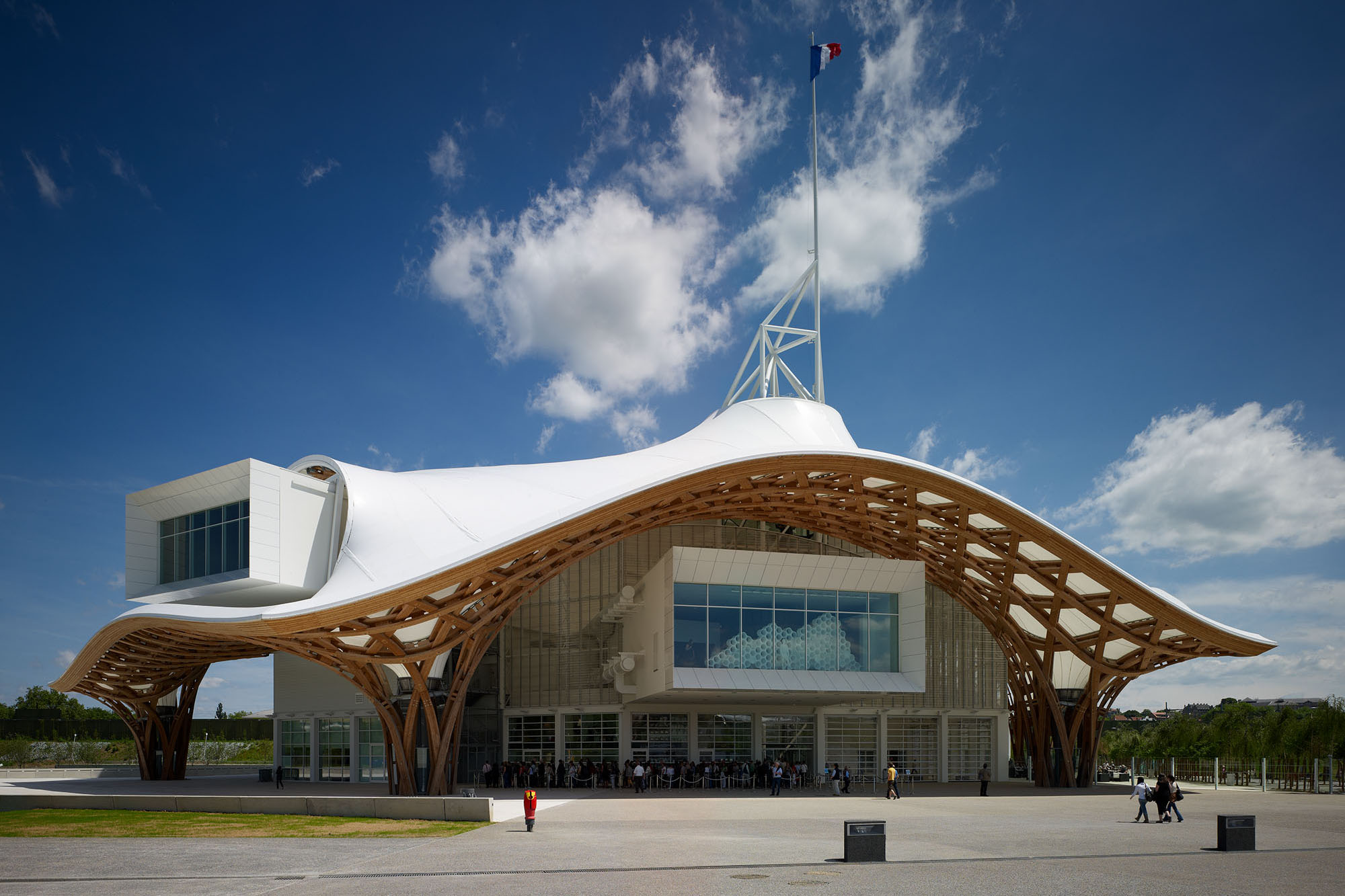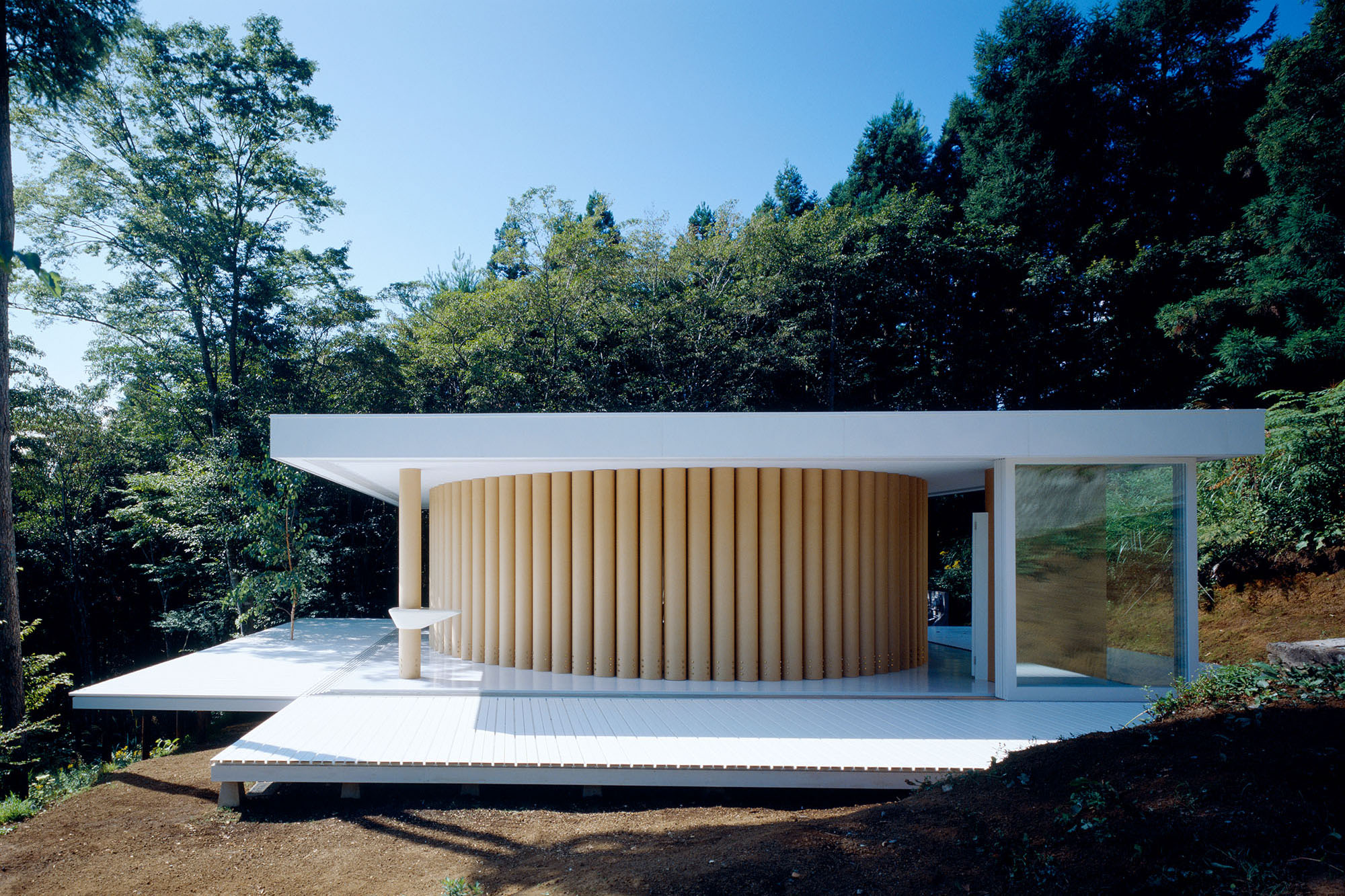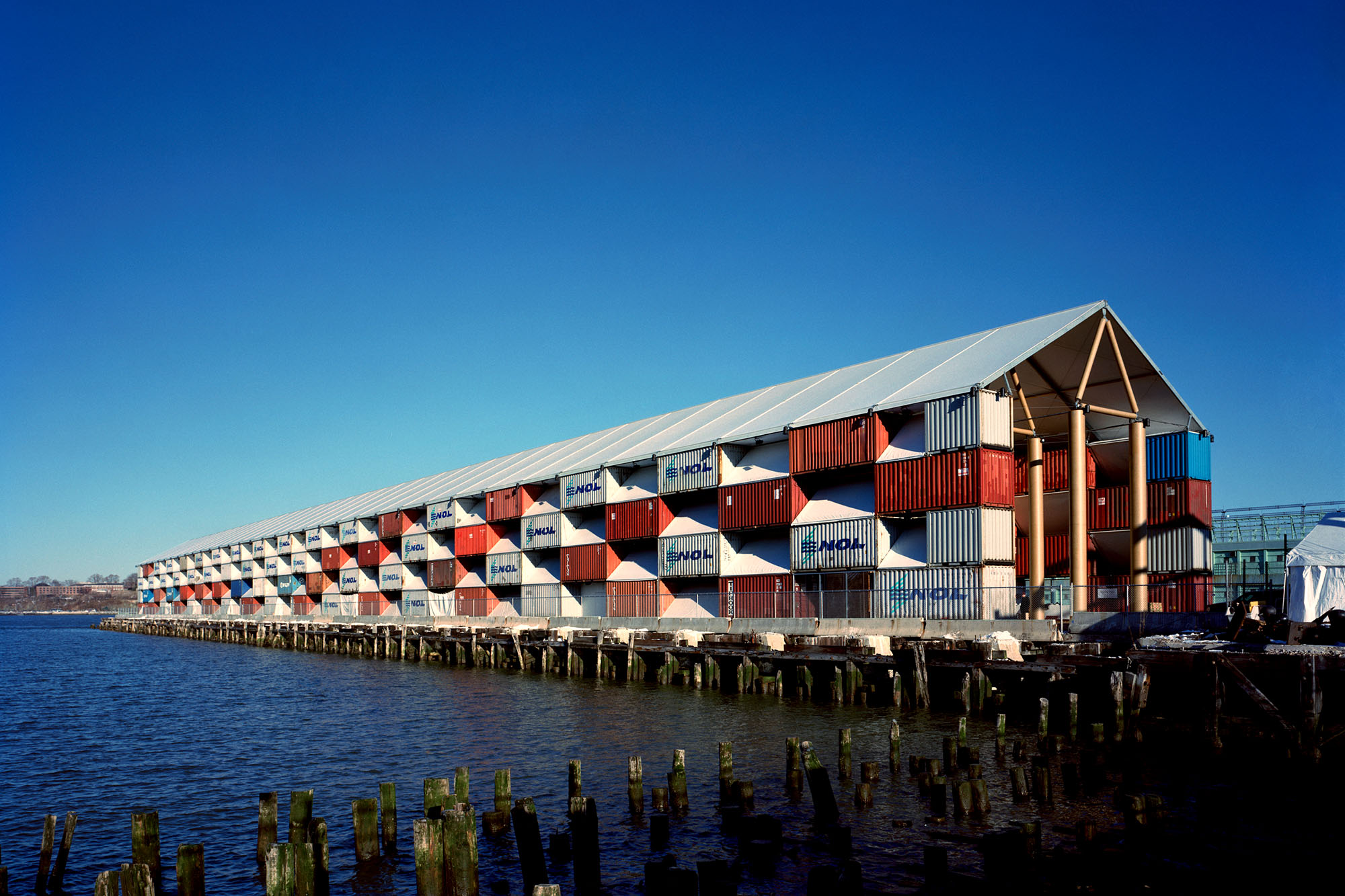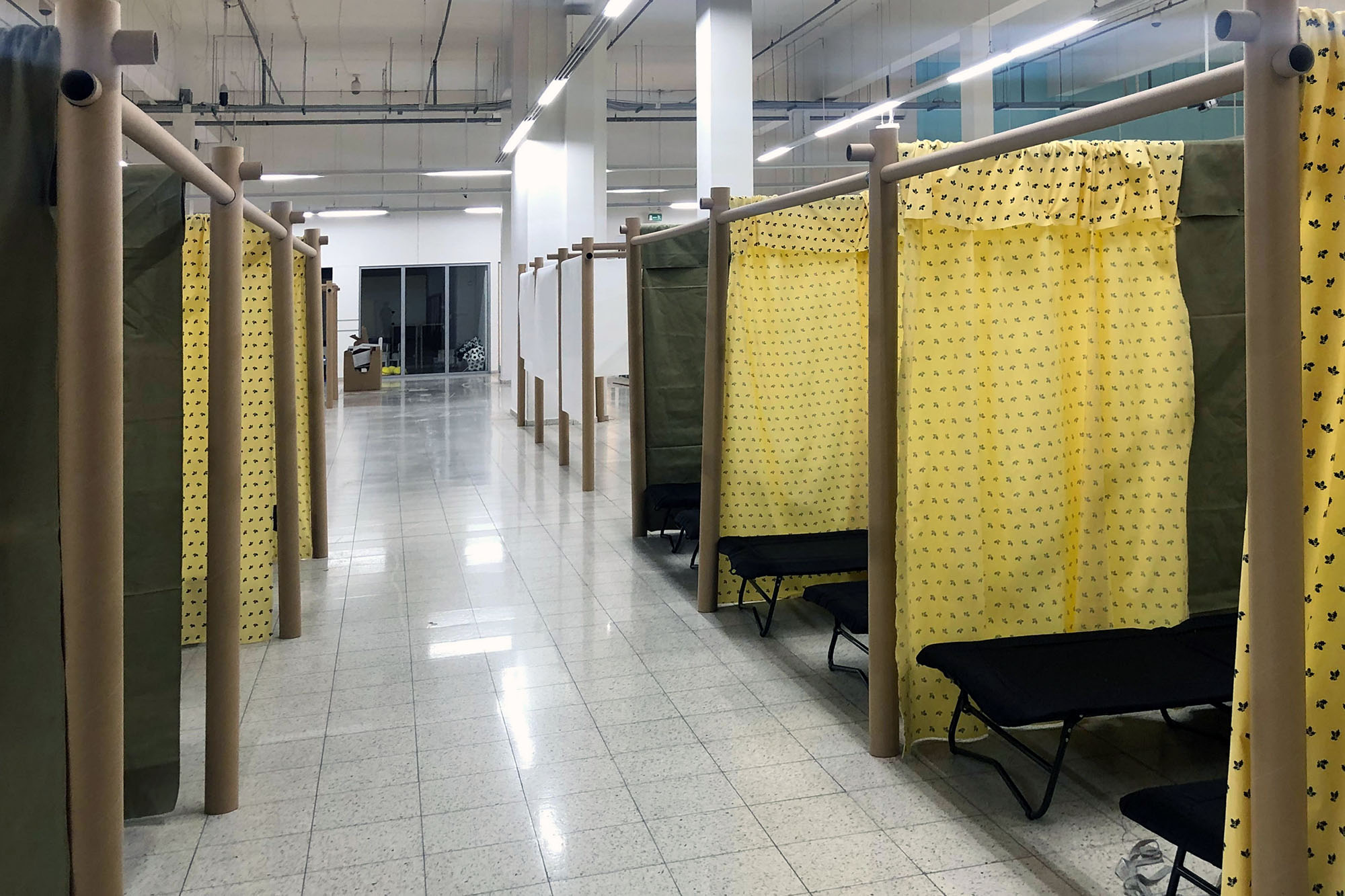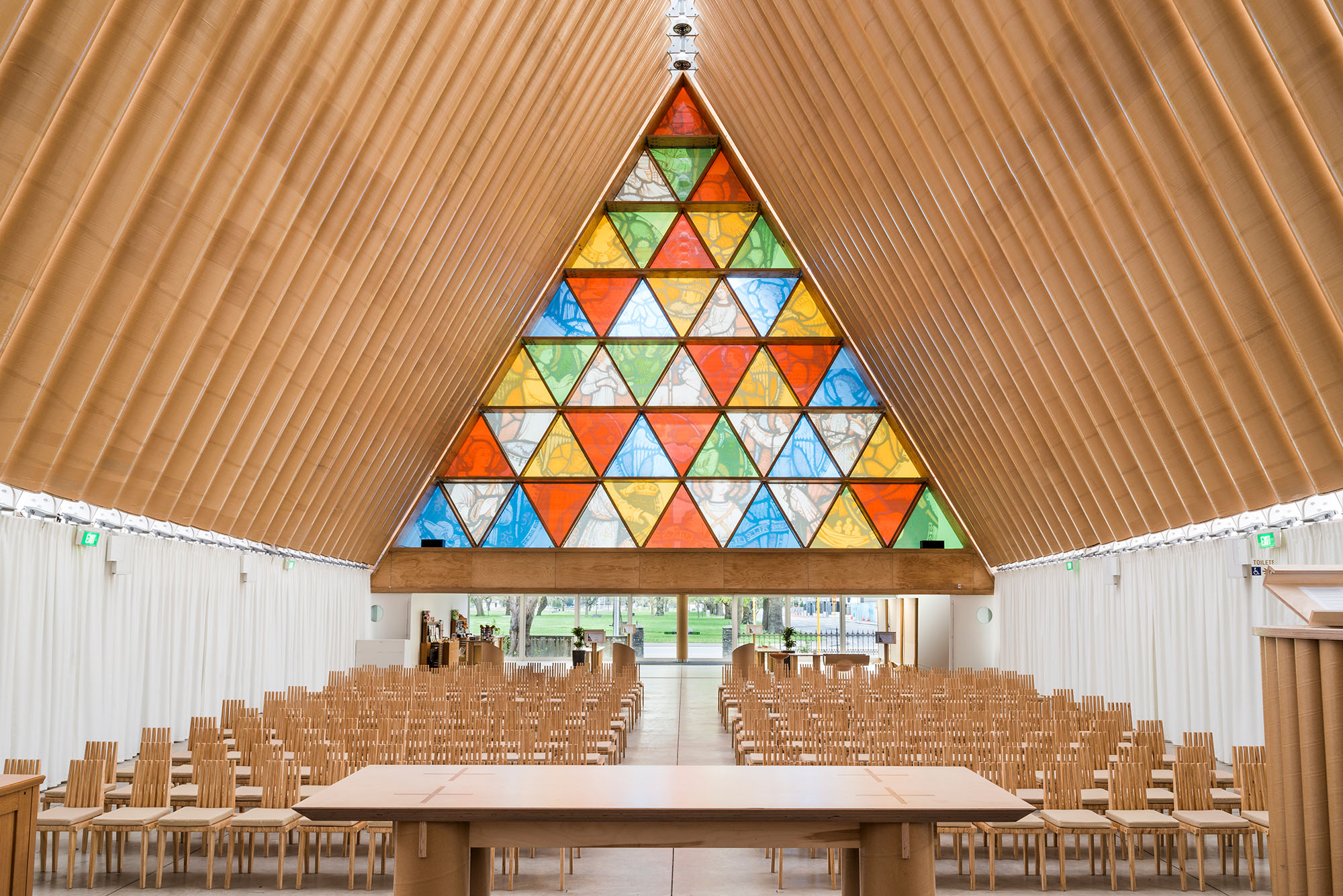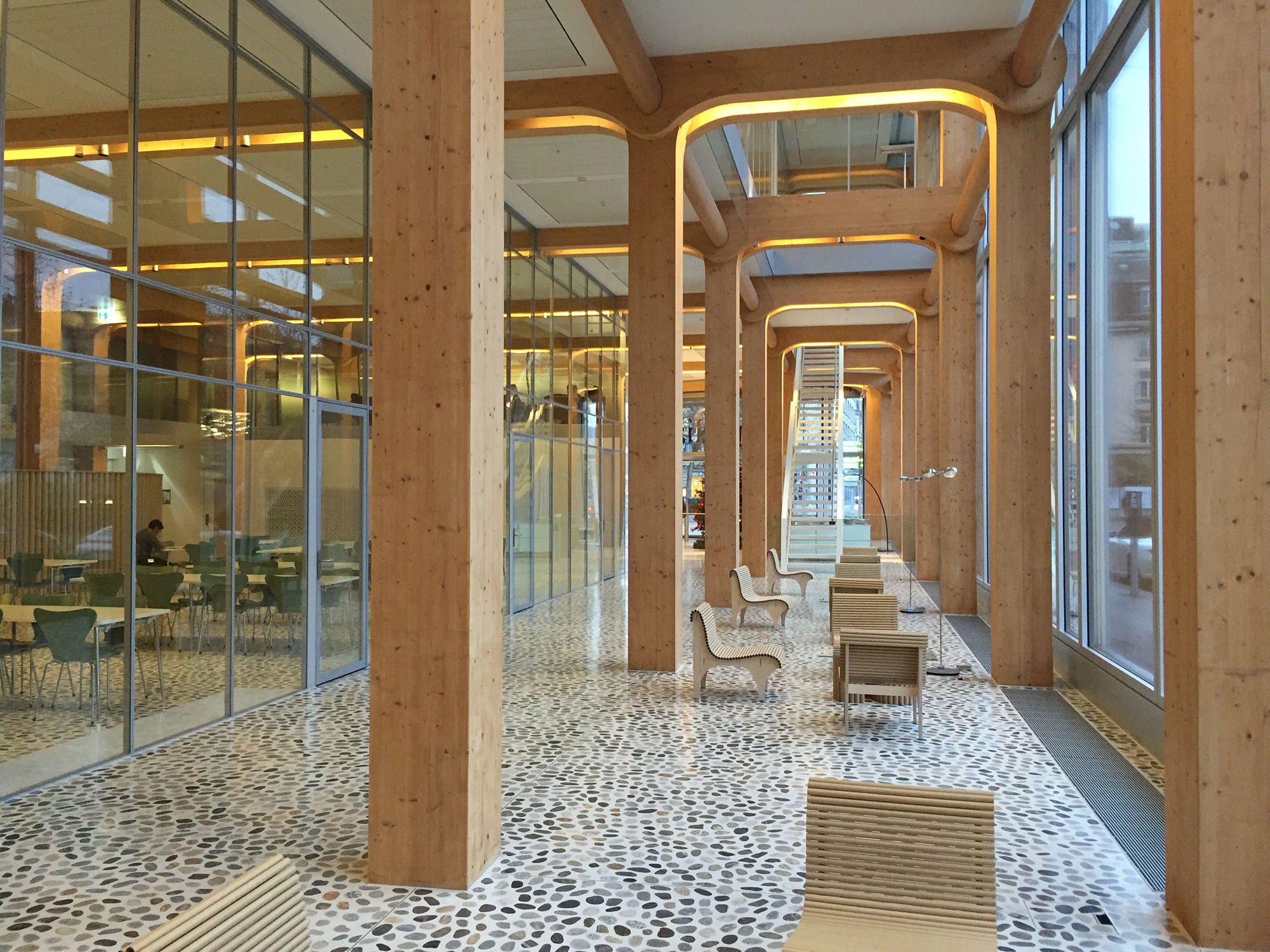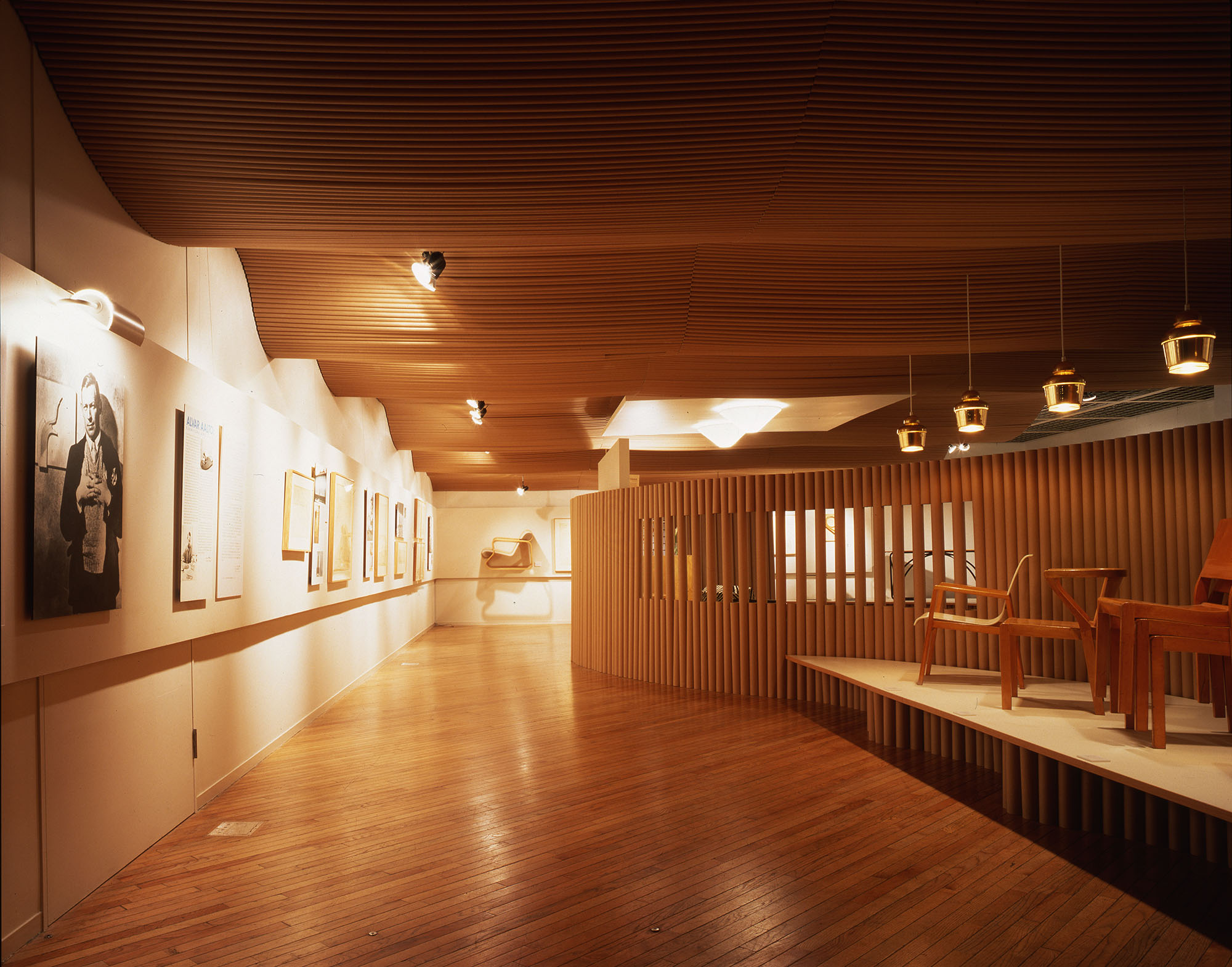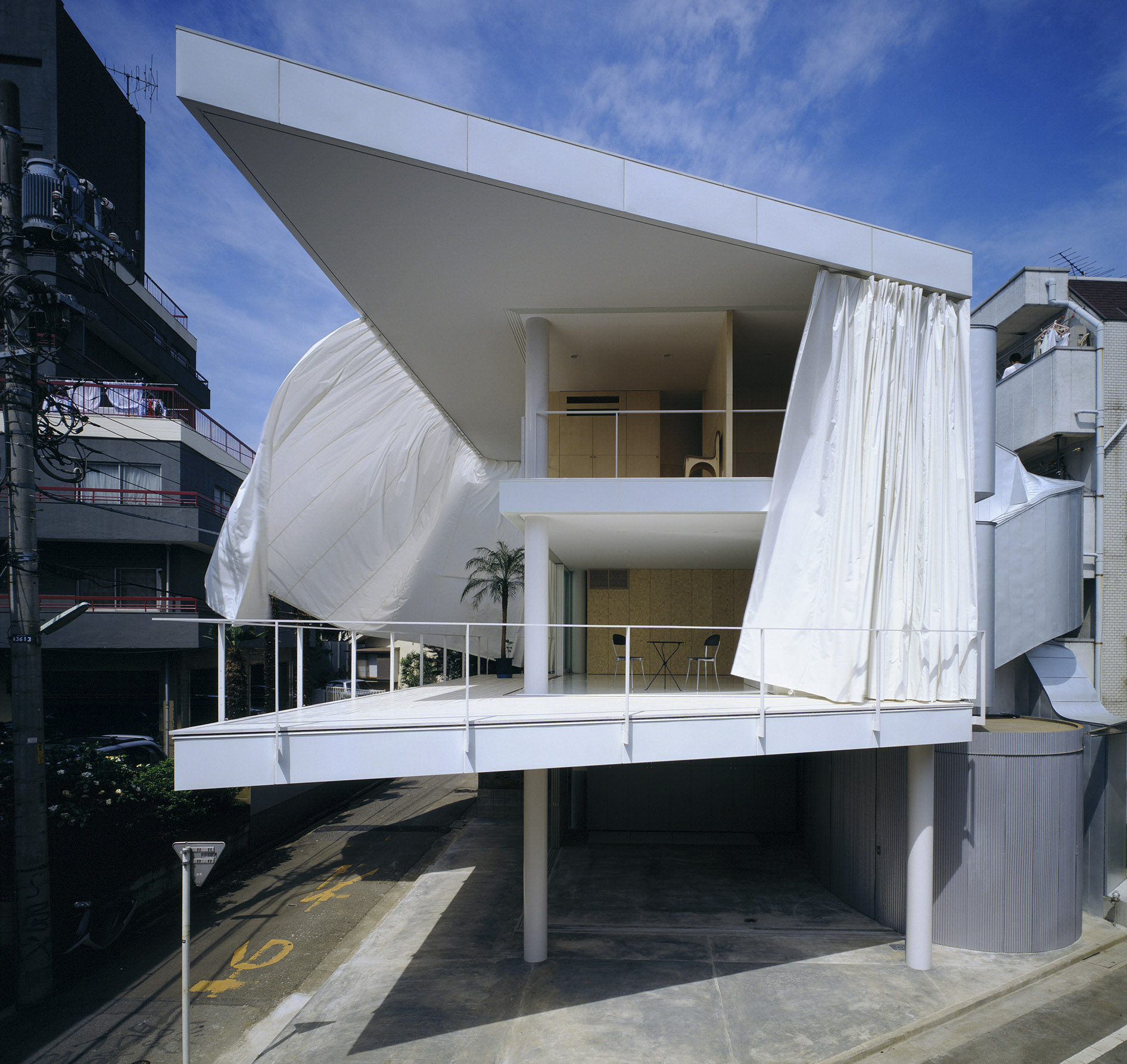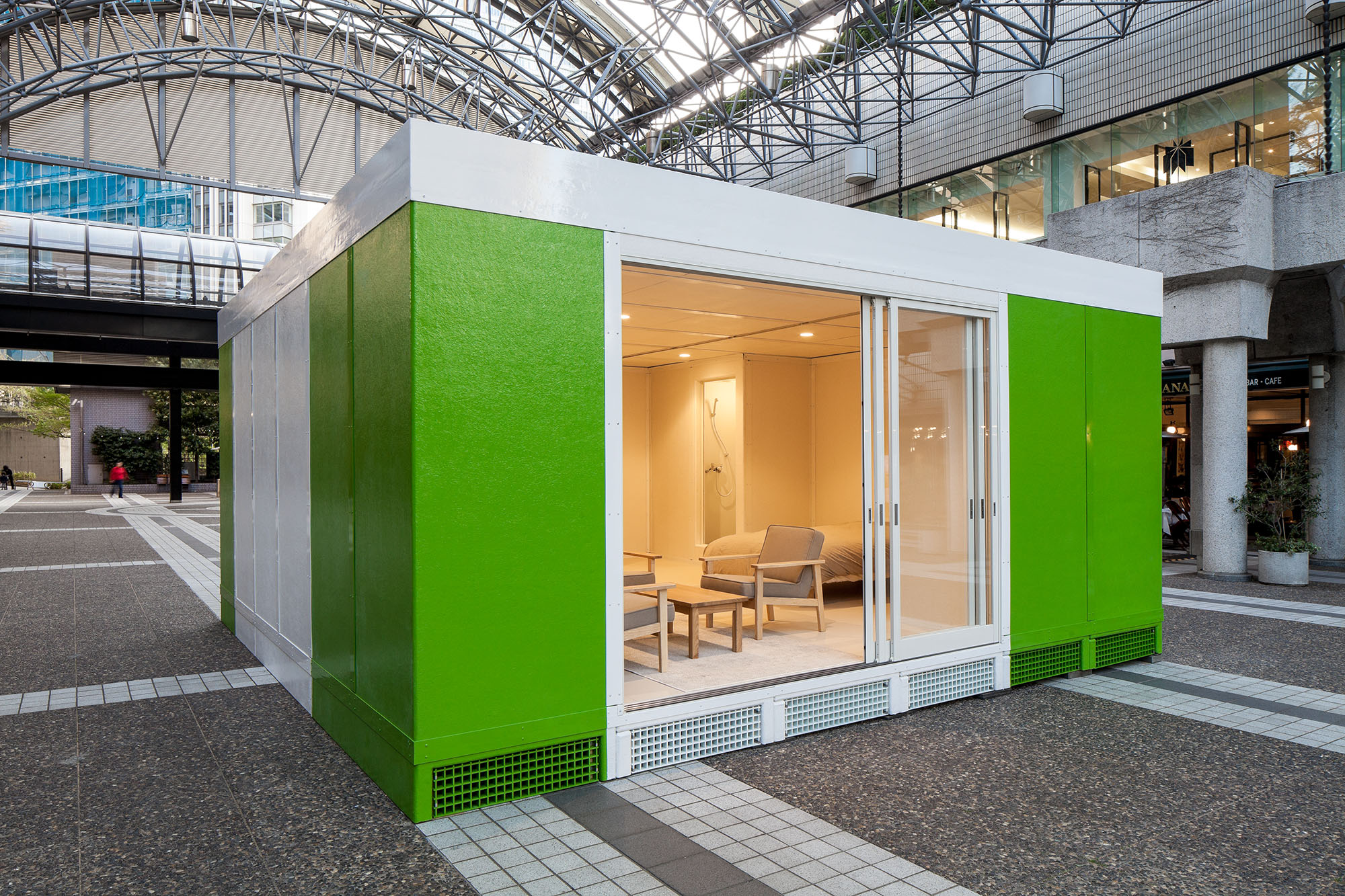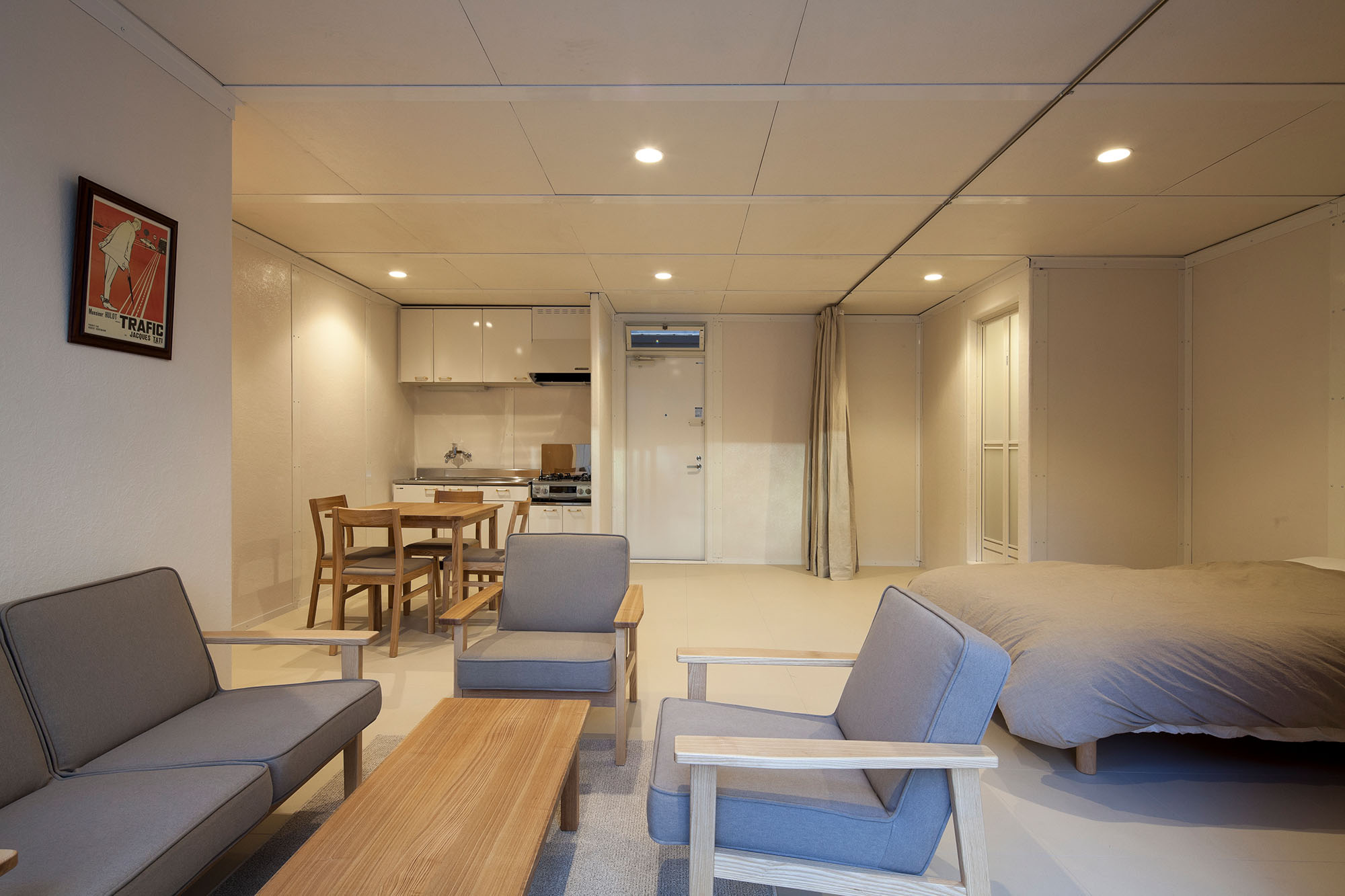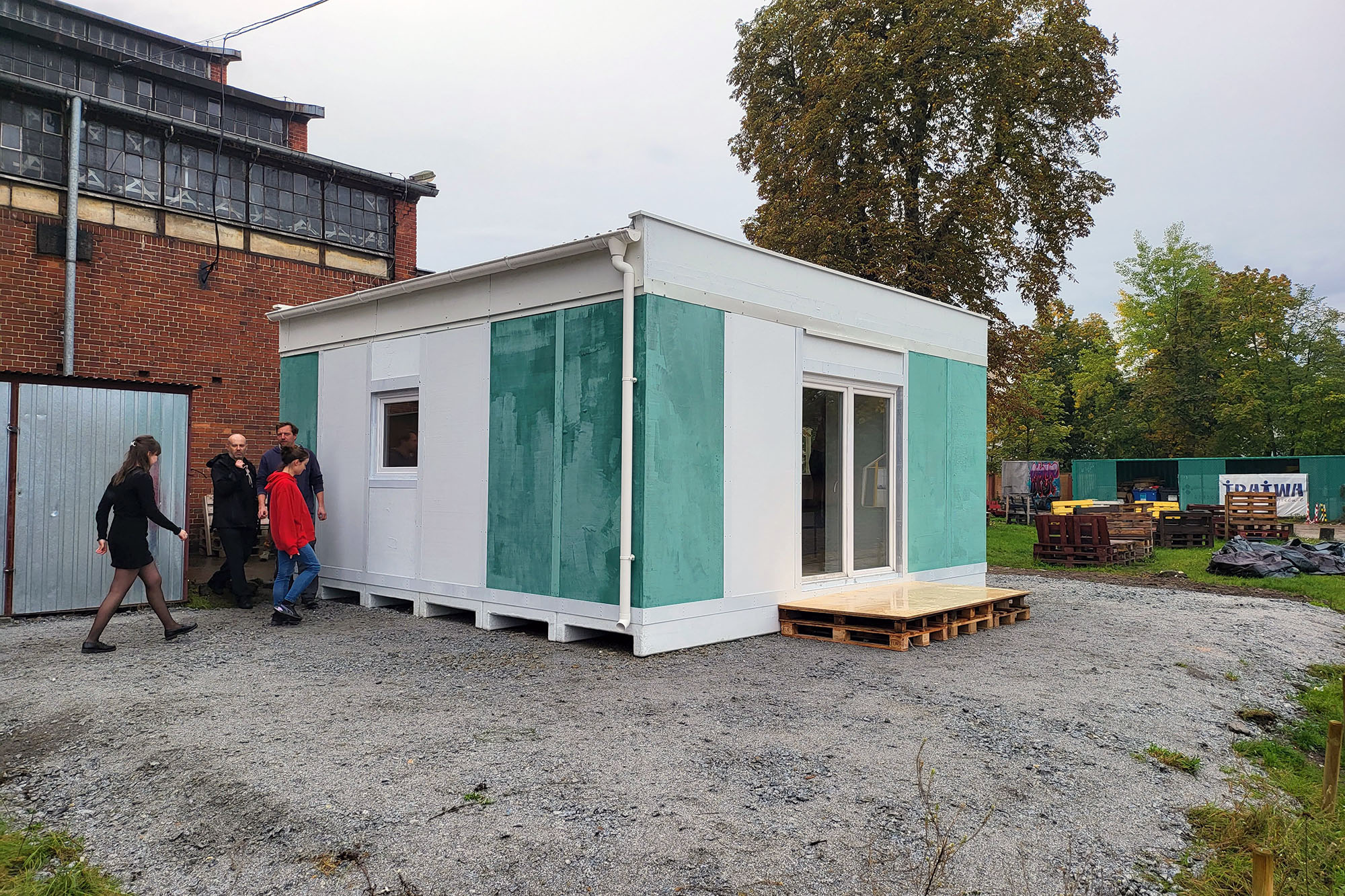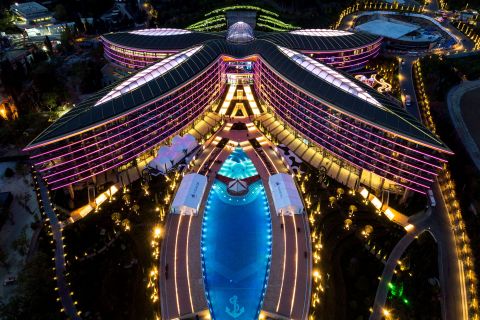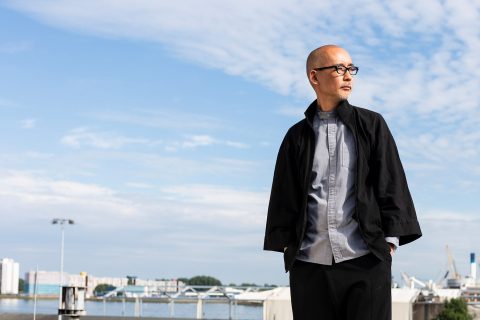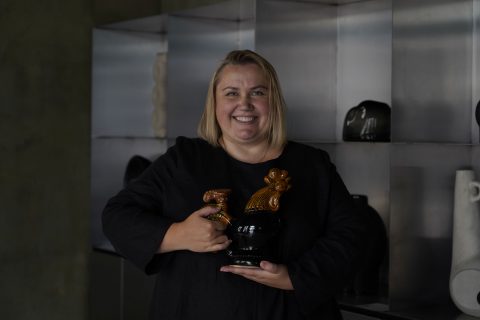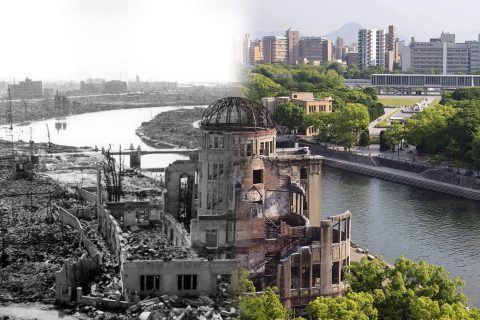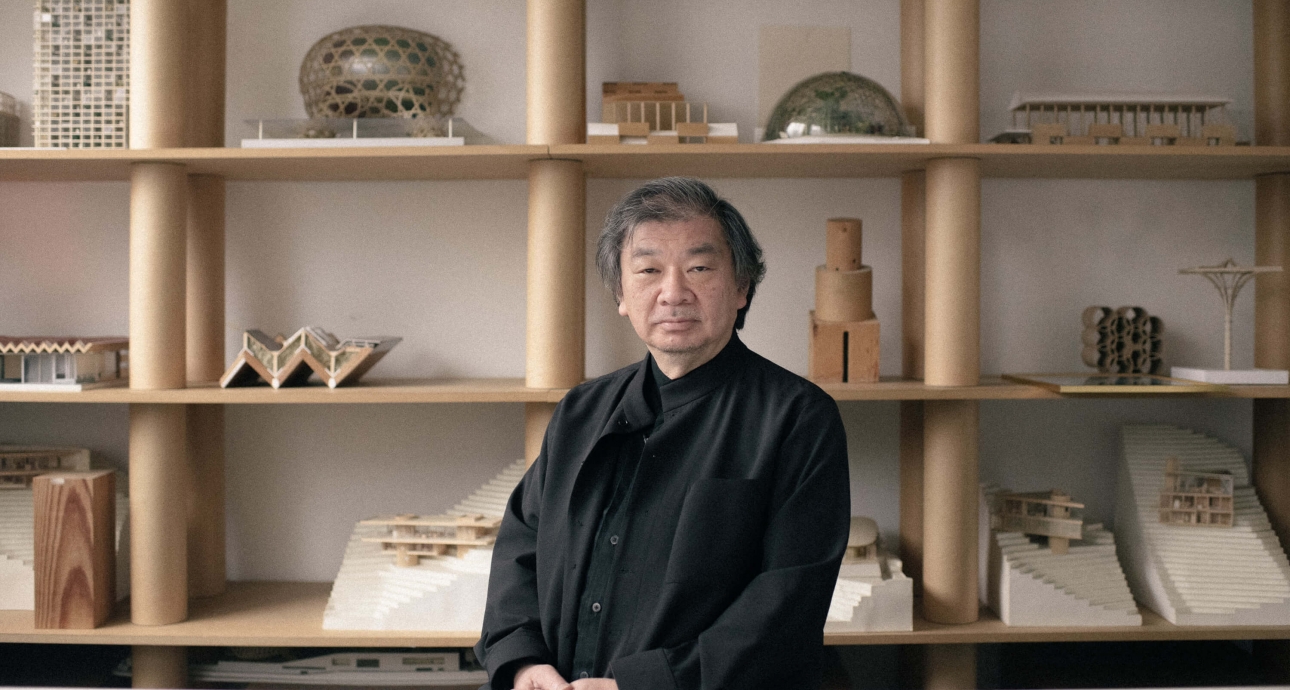
‘Even a Paper House Can Become a Permanent Accommodation’: Shigeru Ban on How to Build in a Fast and Cheap, but Lasting Way
Shigeru Ban is one of the most interesting modern architects. Known for his love of reusable materials, he has made wood and paper his calling card. From the former, the architect created multi-story office centres, out of the latter he made partitions, columns and walls.
Shigeru’s admiration of environmentalism also manifested itself in social projects. He implemented the first of them in 1995, creating houses for earthquake victims in Japan. Then the architect used beer crates and his favourite paper as building material. This made it possible not only to reduce the cost of construction, but also to significantly speed it up.
Ban offered aid to Ukraine back in March. The cardboard pipe partition systems he developed were installed in gyms and other large premises where Ukrainians fleeing the war lived. In September, the architect came to our country to give a lecture and present another project — cheap houses for displaced people: in theory, such housing can be assembled in a few weeks.
In an interview with Bird in Flight, Ban told how he picks out his clients, how the work of an architect is better than that of a doctor, and what you need to remember when building a church out of paper.
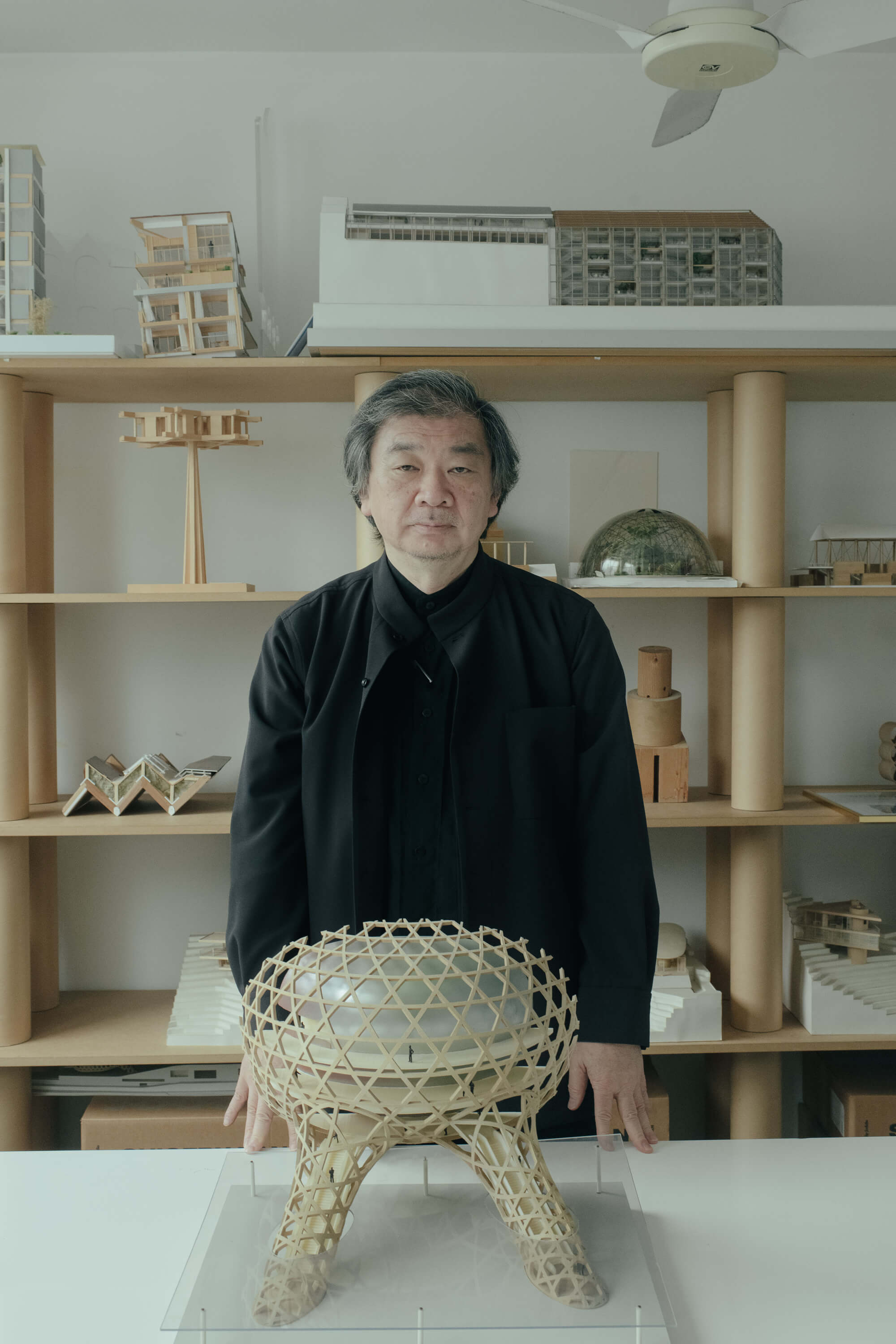
It was your first time visiting Ukraine. What’s your impression?
I mostly help those suffering from natural disasters. So I must say Ukraine is only the second place, after Rwanda, where I witnessed war.
I enjoyed the nice hospitality, and it amazed me how the Ukrainians are trying to keep up with normal life.
How do you cope with the stress of what you saw on the sites of disasters?
I can’t say that I feel stressed because I always meet good people. For example, in two days in Ukraine, I held two lectures and met with the city mayor, discussing with him my idea of rapid housing construction.
And how did he find it?
He liked it. Even showed the site where the prototype could be built.
Tell us more about this project. You offered the paper tube system for these partitions, right?
Yes. This is the first phase of the project, its task is to help Ukrainian refugees and displaced people. The second is to quickly build cheap housing.
Now contractors have so much work, and building materials keep on getting more expensive. So I suggested creating buildings that would not require expensive materials and special skills. Polish students built such a building in two weeks. Moreover, the construction process itself took two days, the rest of the time they were preparing.
What is this building made of?
This is a prefabricated panel system. The structural panel is made of foam core, Styrofoam, which you normally use as insulation or inside the cardboard box packing. From outside we protect it with glass fibre and plastic. That panel is very lightweight, also very well insulated.
This technology is a very classical one to make a boat. So I just applied it to the building construction.
When will they start building according to your project in Lviv?
I don’t know.
While we are deciding whether to bring the house assembled in Poland to Lviv or to assemble a new one here. At the same time, I am looking for partners in Ukraine.
Is this prototype a single family home??
The one we built in Poland was smaller, only six by two meters. But the prototype doesn’t have to be big, it’s just a sample. In general, the structure can be modified to any number of people.
How much does such a house cost?
I don’t know, because this styrofoam is very cheap, it was given to us by a Polish company. I think the kitchen appliances, toilet, shower for such a house will cost more than the house itself.
Can it be multi-story?
I have not built two-story houses, but we are going to try to make such a prototype in Japan. I am sure there will be no problems. But building three floors or more is not easy, fire regulations make it harder.
Have you seen any projects of temporary housing already built in Ukraine?
Yes. I visited a building for pregnant women and mothers with children in the suburbs of Lviv. It is made of good wood. As the author of the project told me, the building was built quickly, in three months.
But from my experience of building temporary houses I can say: they are a bad choice. You spend money on buildings that you then have to dismantle.
It is necessary to build something quickly that can later be turned into permanent housing. Actually, my houses are not temporary, they are for permanent residence.
Temporary housing is a bad solution. We need to quickly build something that can be turned into a permanent home.
Temporary housing is a bad solution. We need to quickly build something that can be turned into a permanent home.
Can these hemispherical houses, which are planned to be implemented in Ukraine, become permanent?
Anything can be permanent if it is needed by people and is constructed in compliance with building regulations. Even the temporary buildings I’ve made out of paper have sometimes turned into the permanent ones, including the church, because even while dealing with paper, we follow local building regulations and work with a good structural engineer. And the structures created by a commercial developer may turn out to be temporary, even if they are made of concrete.
The studio of the Ukrainian architect Slava Balbek has developed a modular housing, similar to that which is manufactured in the size of a transport container. It looks aesthetically pleasing. Actually, Balbek believes that even temporary housing should look nice. What do you think about it?
I completely agree with that.
Speaking of modules. I have also used shipping containers for temporary structures. We stacked them vertically in a chequered order to make more volume. Buildings can be quickly assembled from them, although they are very narrow and inconvenient — less than 2.5 meters inside.
Is it possible to build temporary housing that solves more problems than it creates?
I think so.
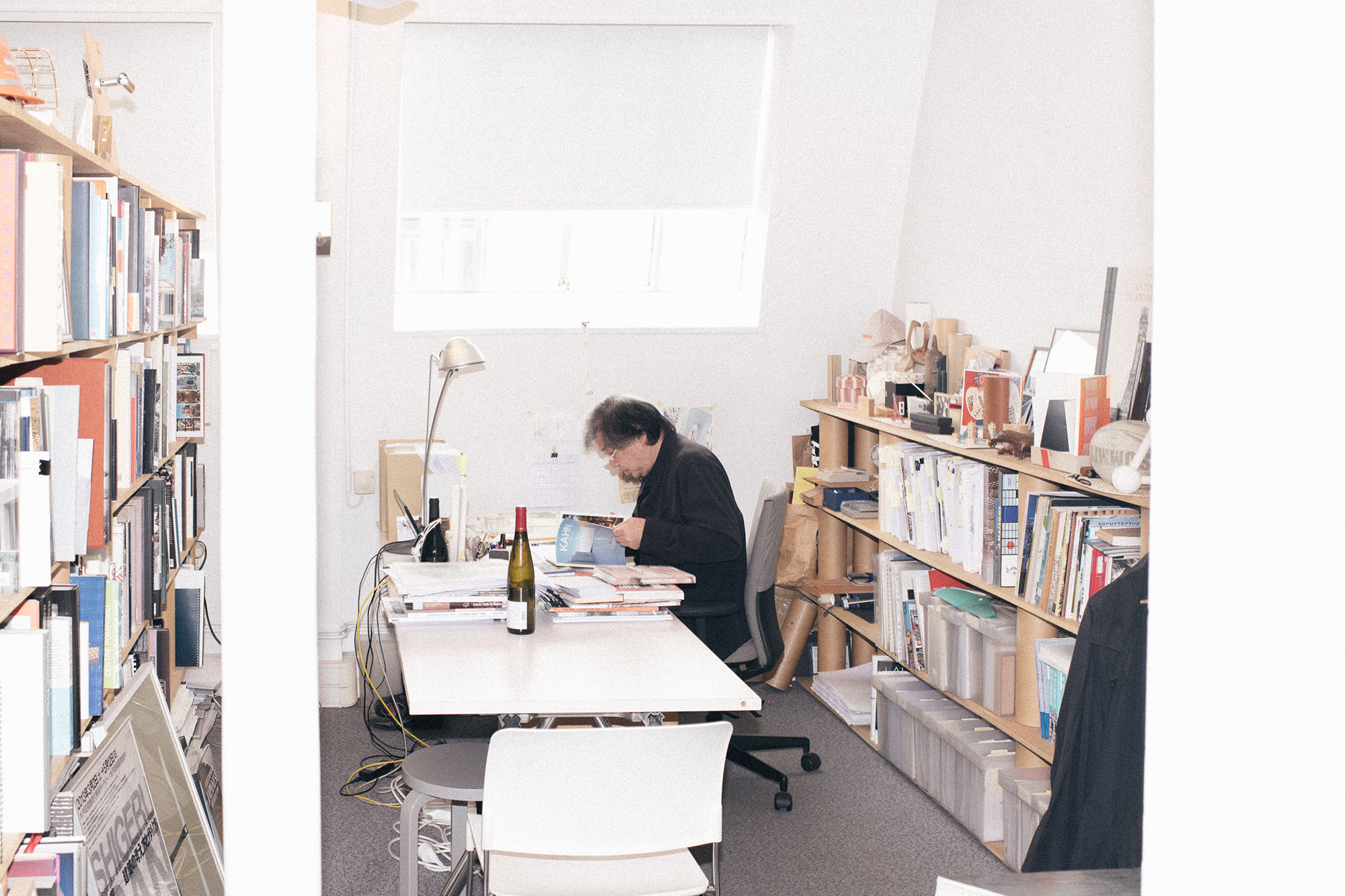
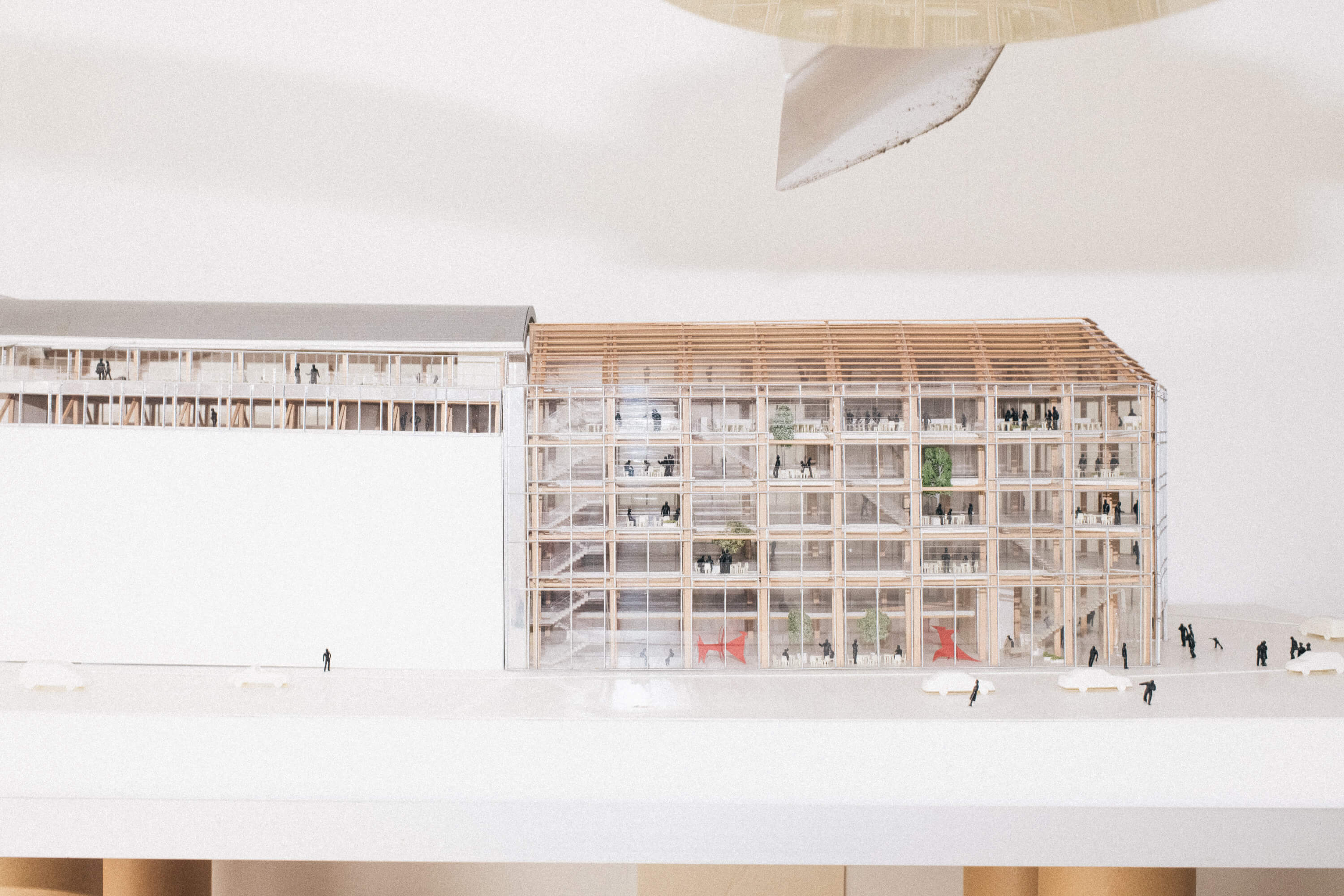
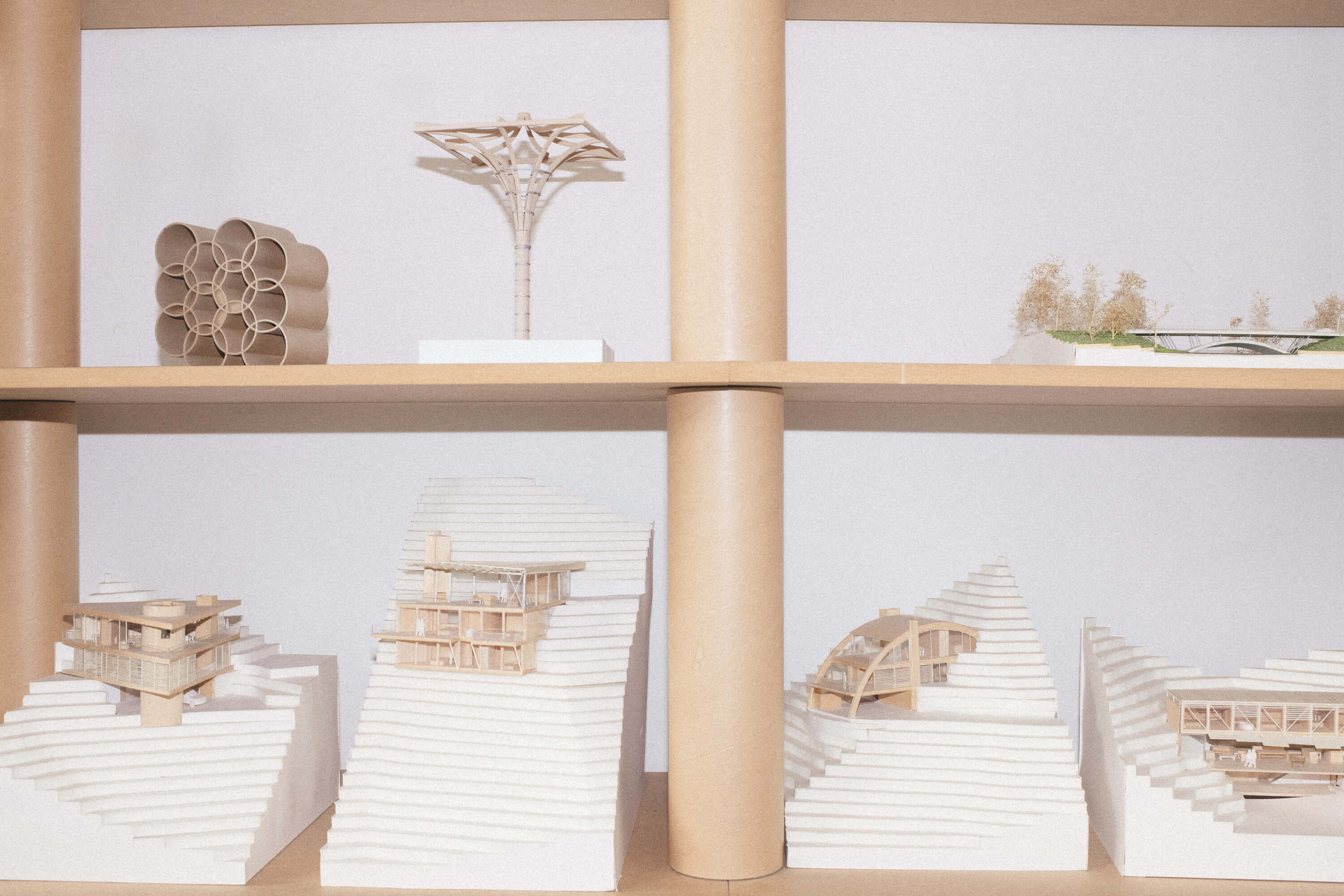
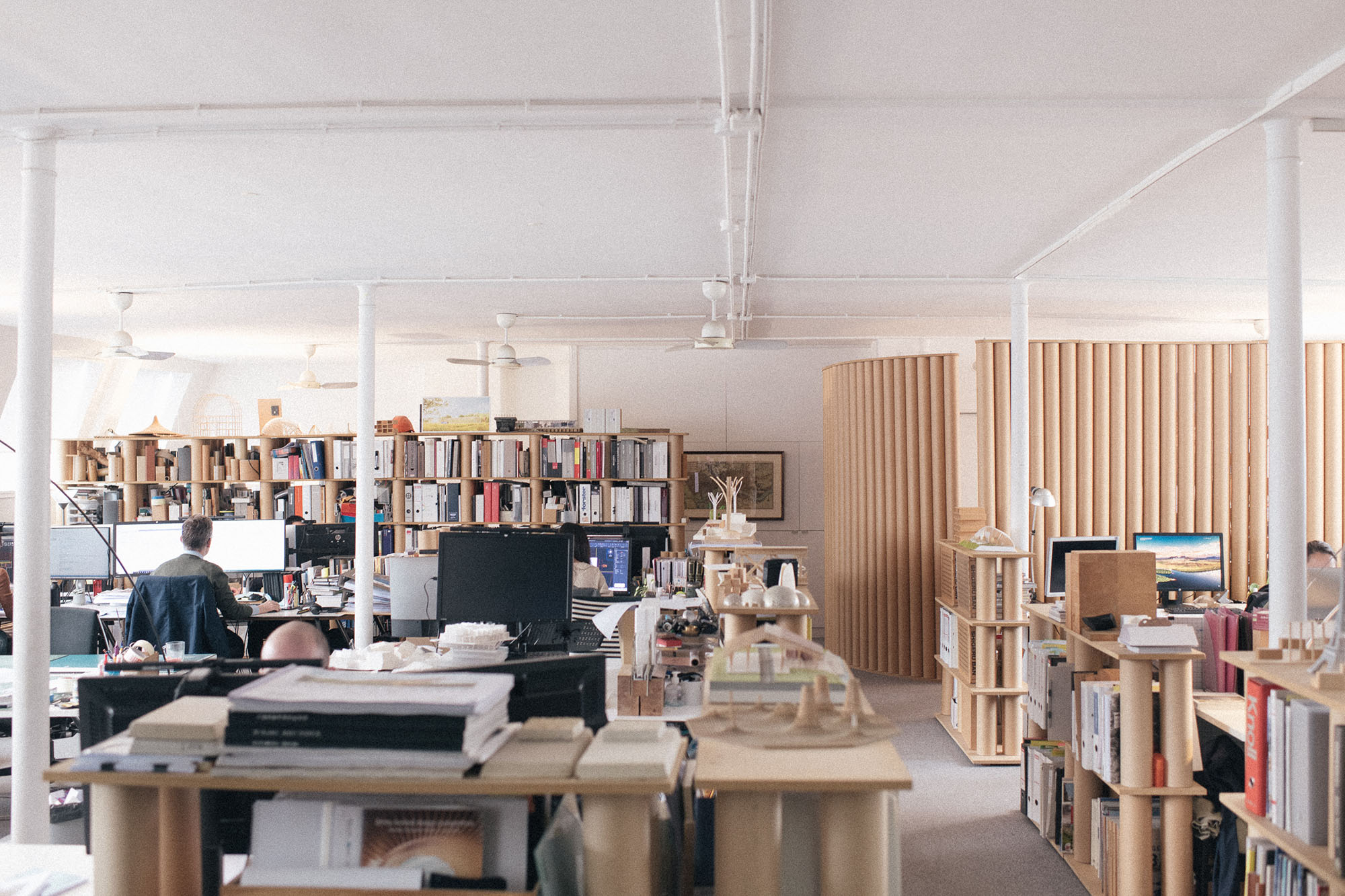
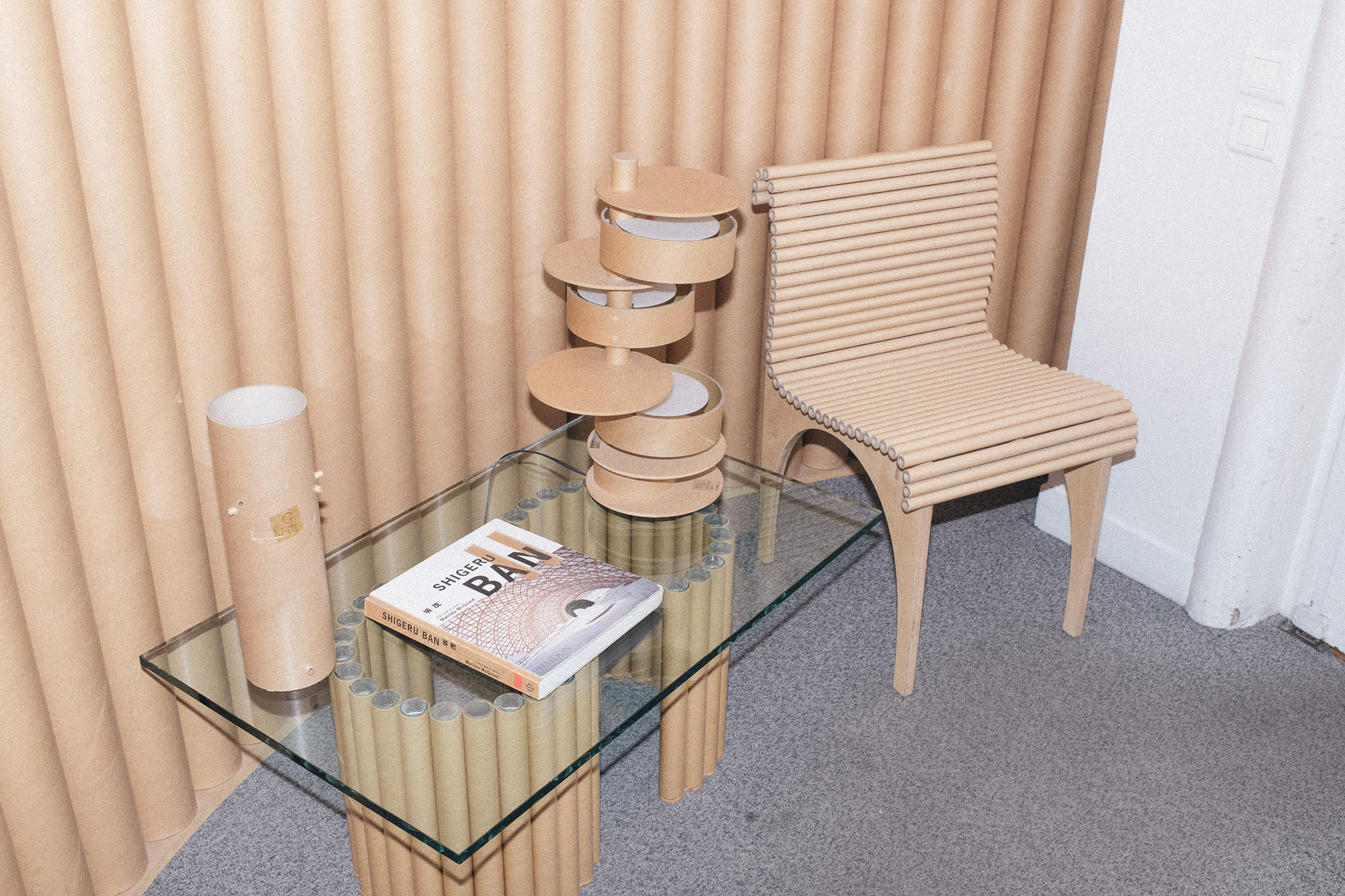
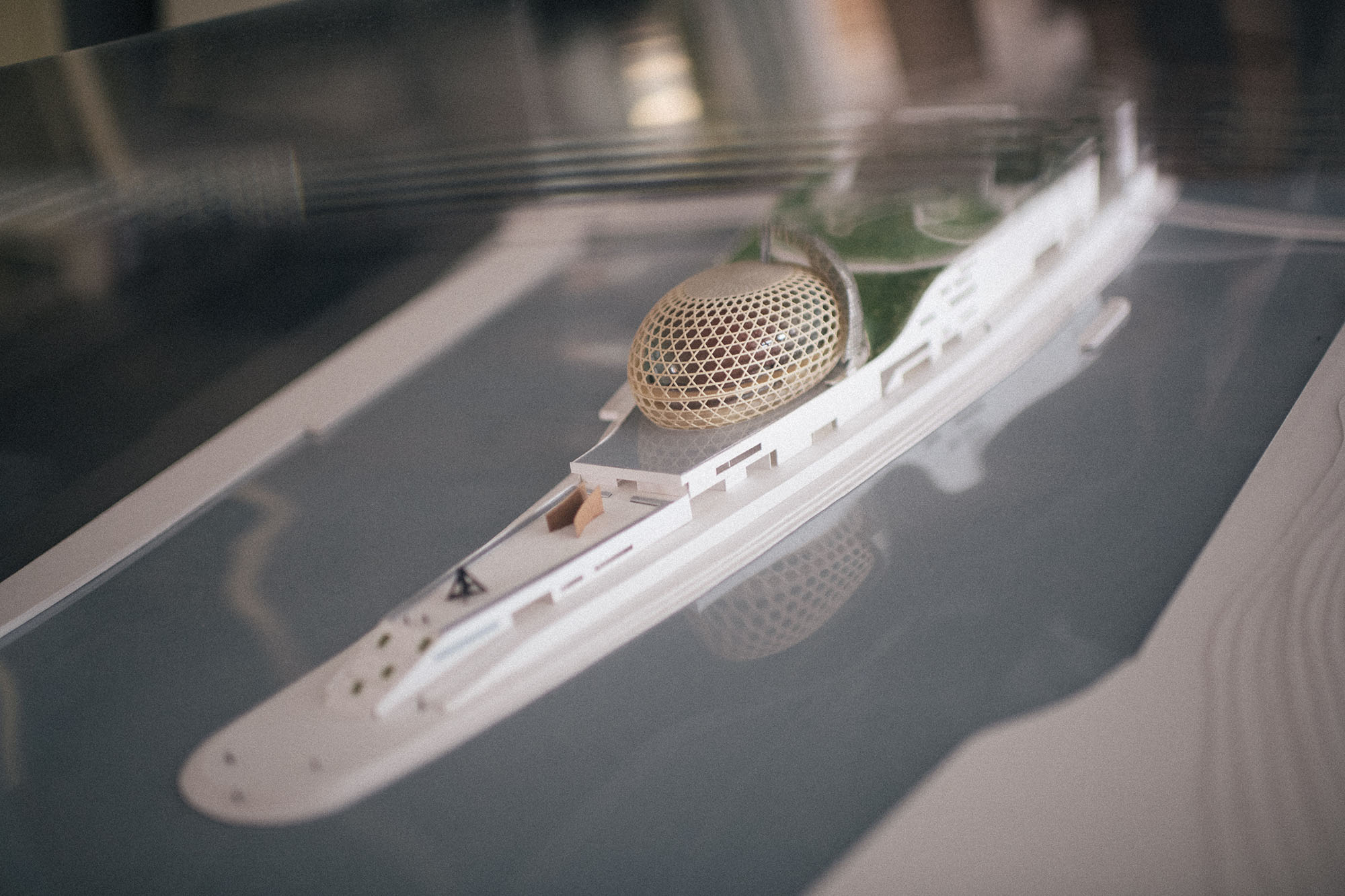
In your lectures, you often say that there was a moment when you realized that architects work for rich and influential people, not for society. You said it was painful. When did it happen?
In the tenth year of my individual practice. I was very frustrated, so I started working with people who lost their homes.
You started working with paper tubes 37 years ago. Aren’t you tired of them?
No. This is the basic material. And I’m still inventing new types of paper structures.
Why do you like paper so much?
It is highly accessible. Take at least this system of partitions for large rooms. We created them from materials provided by a commercial company for free.
But you also replace the walls in your projects with curtains and glass shutters. Replace steel and wood with paper. What is wrong with ordinary materials?
This is not quite true. I use concrete, steel, wood. That is, everything available right away.
Take glass shutters, they are important for expressing one of the principles of my philosophy in architecture: the combination of internal and external space and the creation of an in-between space. I also like to make my own design systems like Frei Otto or Buckminster Fuller did, rather than just being influenced by fashion.
The rumour says it, you don’t like to compromise with the customer. Is it true?
I will explain. I respect the client’s request and adapt the design to his requirements and budget. But this is not a compromise, because I have never changed the main idea of the project.
I carefully select a client for commercial work: I do a very simple presentation of a design concept to see if the client agrees with my philosophy. If we have different moods, values and goals, nothing good will come out of the project.
I carefully choose a client for work: if we have different moods, nothing will work out.
It is easy for a famous architect to be uncompromising. And what do you advise the architects who are just starting their career: should they lose a client because of values or prepare a project, earn money and gain experience, whatever the case may be?
There is no one easy and right way. Like architects, clients are different.
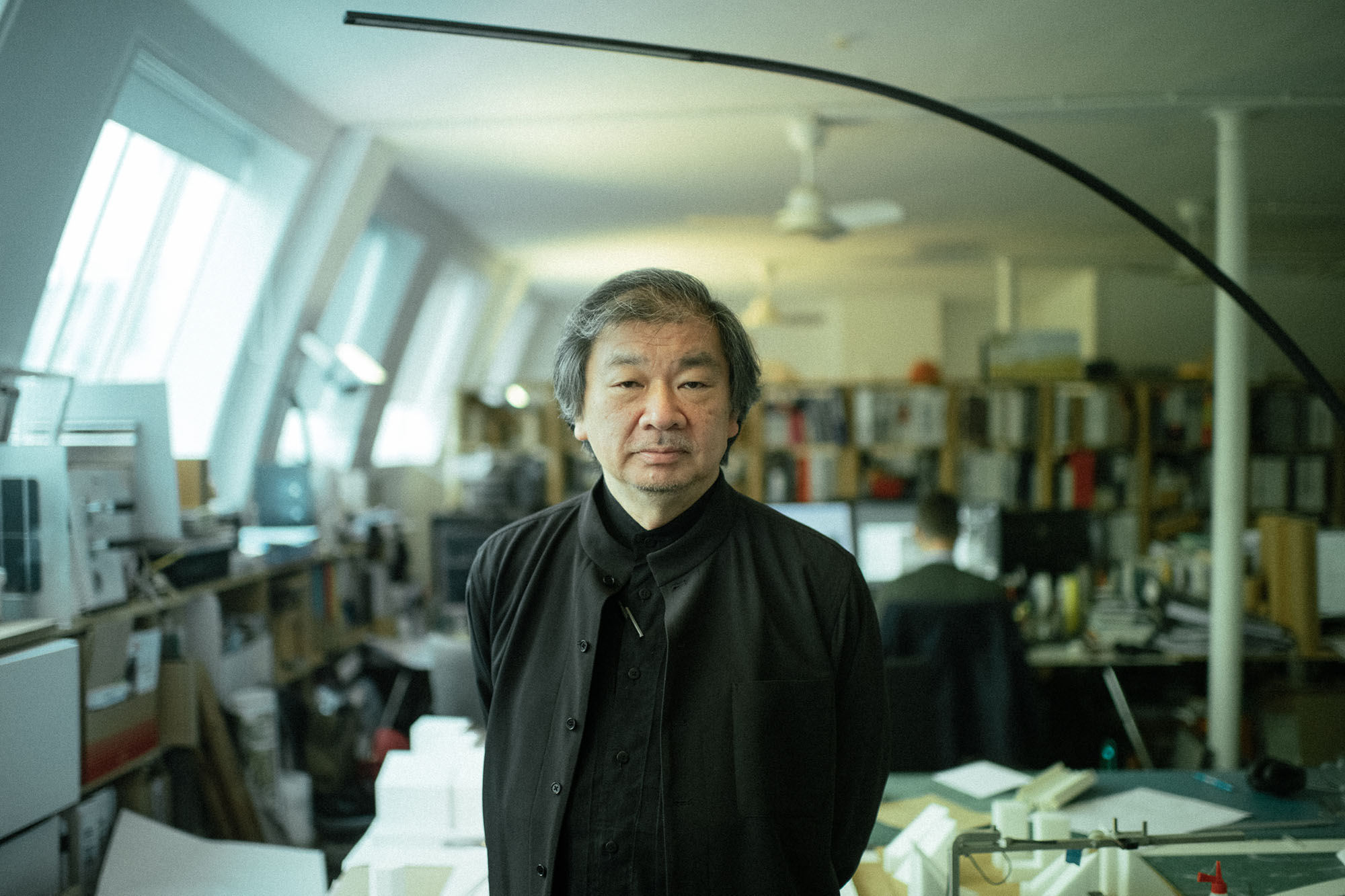
Which projects are more common in your practice, commercial or charitable ones?
I can’t really tell. For me, it doesn’t matter what project I work on. The main thing is that my energy and time are not wasted.
How many people do you work with?
About seventy. Forty-five in Tokyo, ten in New York, about fifteen in Paris. But I am the only designer in the company, I design everything myself.
How do you work from three offices located so far apart?
I spend a week each in Paris and Tokyo, and I go to New York once every three or four months.
How much does a Shigeru Ban project cost?
My partners in each of the offices are responsible for the fee and negotiations, I am not interested in this.
Have you ever had one of these partners say it’s time to stop being charitable for some time and make a bit of money?
Yes. But I’m lucky with my partners, they respect my work. So when needed, I start to devote more time to commercial projects.
There is an opinion that architects are highly underpaid. Do you agree with this?
If you compare architecture with IT and finance, this is true. But I think that architects are lucky, because we make our own projects for other people’s money.
Also, unlike doctors and lawyers, architects always work with happy people. Because the moment when the client gets his dream house is one of the happiest in his life.
But if you become too rich, it will be difficult to maintain your passion. That’s why I’m not interested in making money. I earn precisely as much as I need.
All photos are credited to: Dmitry Kostyukov, specially for Bird in Flight (unless it’s stated otherwise)
New and best
